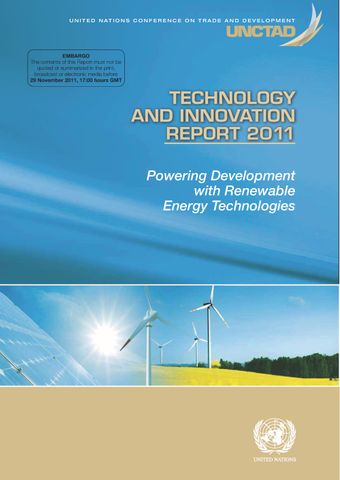Stimulating Technical Change and Innovation in and Through Renewable Energy Technologies

- Author: United Nations Conference on Trade and Development
- Main Title: Technology and Innovation Report 2011 , pp 55-77
- Publication Date: February 2012
- DOI: https://doi.org/10.18356/cd3109d4-en
- Language: English
The historically unprecedented rapid growth rates in the industrialized countries over the past century have been made possible by the application of science to productive activities, which underscores the importance of knowledge and innovation for growth, competitiveness and poverty reduction (Rosenberg, 1982; Baumol, 2003; Nelson and Winter, 1982; Reinert, 2007). This growth has led to a widening gap between the industrialized and developing countries; but also over the past three decades, there has been a growing divergence among developing countries themselves (Ocampo and Vos, 2008). Within this broader landscape, a gradual reconfiguration of innovation activities is taking place in which many developing countries are beginning to play a larger role.1 For example, in 2006, China accounted for 36 per cent of all value added manufactured goods produced worldwide (UNCTAD, 2007), and since 1999 it has been steadily increasing its expenditure on R&D by an average of about 24 percent per annum. As a result, its R&D/GDP ratio more than doubled in a decade, to reach 1.34 per cent in 2005 (UNCTAD, 2005). Similarly, India was ranked immediately after the United States as the second most favoured location for offshore R&D globally (Economist Intelligence Unit, 2007). However, a large number of other countries (especially, least developed countries) have not been able to keep pace.
-
From This Site
/content/books/9789210551571c009dcterms_title,dcterms_subject,pub_keyword-contentType:Journal -contentType:Contributor -contentType:Concept -contentType:Institution105


